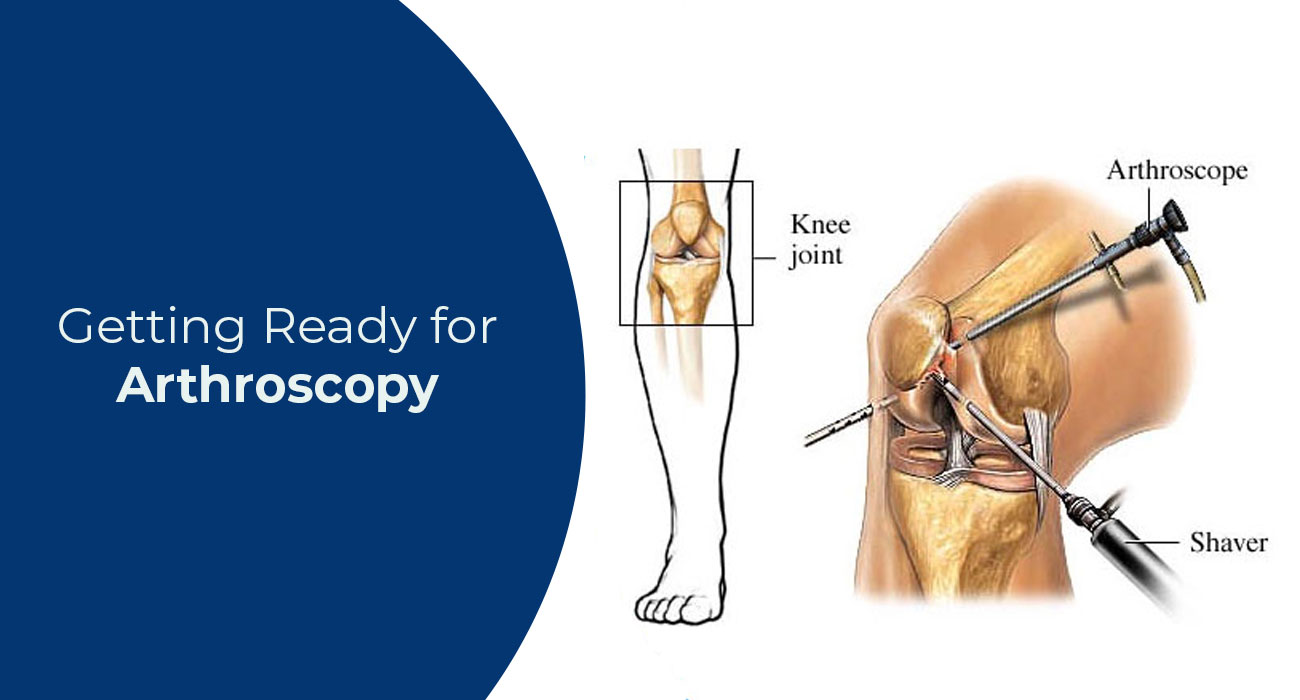Getting Ready for Arthroscopy
05/03/2021
Arthroscopy is a minimally invasive orthopaedic procedure that helps to visualize the joints for diagnosing, assessing and evaluating a wide range of problems and ailments. Arthroscopy comes from 2 Greek words – ‘Arthro’ meaning ‘joint’ and ‘skopein’ meaning ‘to look’. The procedure involves the use of a special instrument, just about the size of a pencil, which is introduced inside the body via a tiny incision. The instrument contains a small lens which helps to magnify the structures in the area to be examined. This involves the use of fibre optics and imaging guidance. One of the greatest perks of arthroscopy is that it does not require large incisions, which means minimal pain and shorter convalescence. You can find some of the best arthroscopy hospitals in Jaipur.
Arthroscopy may be used to examine the joints in your knees, shoulders, elbow, ankle, hip and wrist. The procedure is usually recommended when x-rays and other diagnostic tests fail to give any precise result. Apart from diagnosing and evaluating various joint ailments, arthroscopy can be used to treat the following
- Loosened bone and joint fragments
- Inflamed joints
- Ligament tears
- Scarring
How to prepare for the procedure?
- How you need to prepare for the procedure may vary depending upon the problem that is to be addressed, the extent of damage and the age of the patient.
- You will be required to undergo some tests and screenings to help the doctor device out a proper treatment protocol
- You need to inform your doctor about any medication that you have been taking as you might need to stop taking these temporarily
- You will be prescribed certain medicines that are to be taken in order to prepare your body.
- You might need to fast, starting a few hours prior to the surgery
- Make sure that your doctor is well aware of your medical history
- Arrange for a caregiver as you might need some help while going back home after discharge. You might also need to make some arrangements at home
- Educate yourself about the procedure by asking questions to your doctor. Arthroscopic surgeons in Jaipur strictly believe in maintaining transparency, making sure that you are ready for all the potential outcomes.
What happens during the procedure?
You will be required to remove your accessories and change into the surgical gown, following which you will be made to lie down on the operating table.
The procedure is performed under the influence of anaesthesia, however, the type of anaesthesia that is to be administered may vary:
- Local anaesthesia involves the use of certain numbing agents that are directly injected below the skin to block the sensation. You will be awake throughout the procedure but won’t feel any pain or discomfort
- Regional anaesthesia is the most common type of anaesthesia which is administered with the help of a tiny needle between the lumbar vertebrae of your spine. This helps to induce numbness in half of your body while you are still awake.
- General anaesthesia – best doctors in Jaipur usually recommend general anaesthesia to patients depending upon the time taken for the procedure. This is given intravenously.
Once you are under the influence of anaesthesia, your position will be adjusted to offer better access to the surgeons. The arm or leg that is to be operated upon, will be held in place with the help of a positioning device. In order to reduce blood loss and improve visibility, a tourniquet will be used. Sometimes, the doctors may also fill the surgical area with sterile fluids in order to expand the surgical area.
Another small incision will be made to insert the surgical camera. The number of incisions depends upon the type of tools used.
The doctors will look inside and evaluate the joint for any abnormality. In case the problem is not very serious, it can be treated during arthroscopy. Conventional surgery might also be recommended in some cases where the problem cannot be addressed via a minimally invasive approach.
What to expect after the procedure?
Since the procedure is minimally invasive, it does not take very long. If the procedure is being performed on your knee, it may take about an hour. Following the surgery, you will be shifted to the recovery room, where you will be kept under keen observation:
- You will be prescribed certain medicines that are to be taken religiously. These include antibiotics and pain medication. The former helps to bring down the risks of infection, whereas the latter helps to relieve pain and discomfort.
- R.I.C.E – This stands for Rest, Ice, Compress and Elevate, all of which help in the effective management of the symptoms and also aid recovery. If you don’t feel like taking the pain medication, you can simply use the R.I.C.E technique
- You will be required to wear protective gear. Undergoing the surgery does not mean that you are immune to such problems in future. In fact, you need to take extra precautions because you have been down that lane before. Use temporary sprints, slings or crutches for protection.
- Stay connected with your doctor and keep him updated about your progress. You can consult experts from the best hospital in Jaipur.

